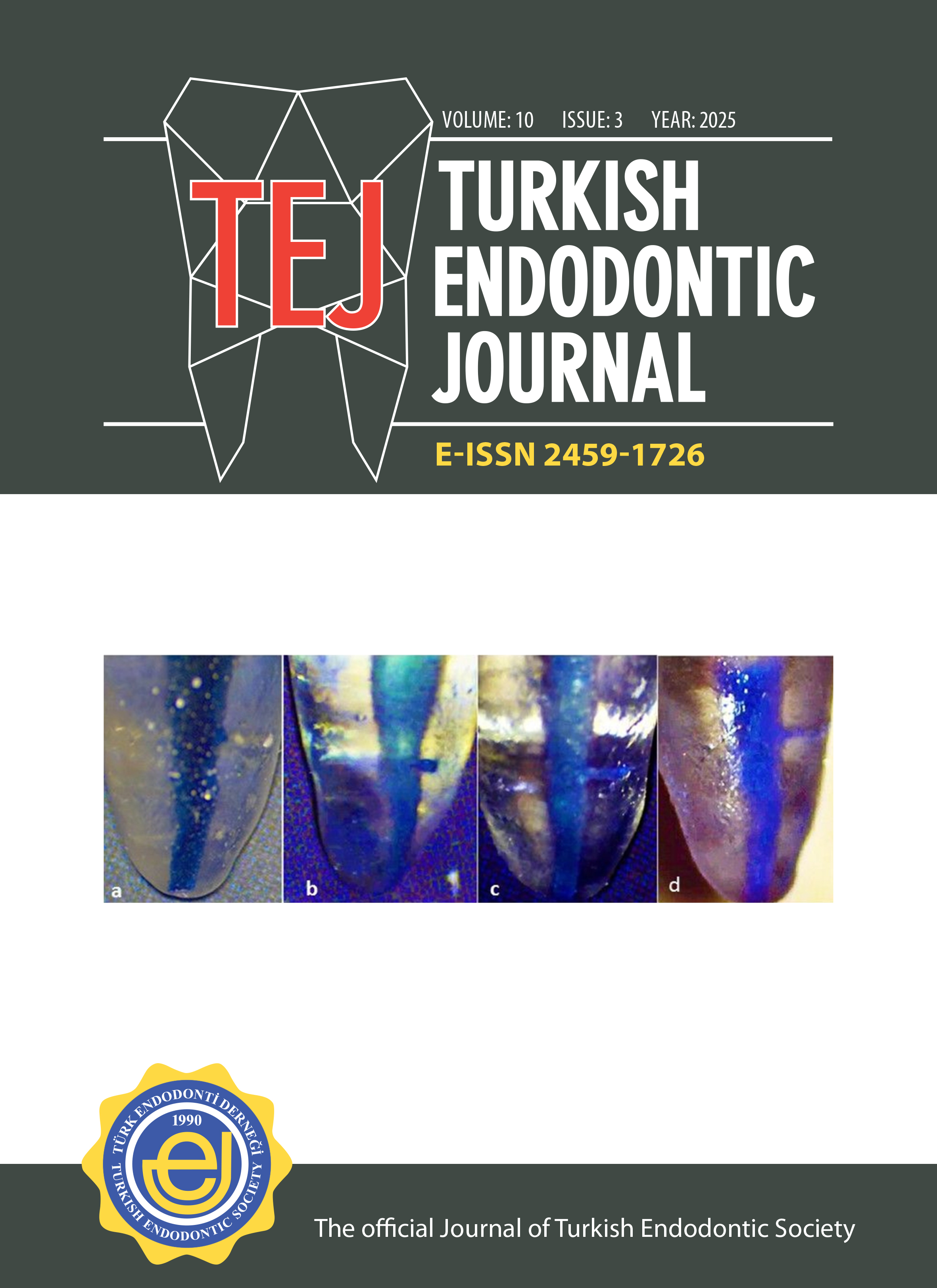Dentists’ awareness and clinical implications of minimally invasive endodontics: A survey study
Elif Çiftçioğlu, Rezan Sungur Güzel, Ceren Cebeci, Çağla Gülhan, Enver Sedat KüçükayDepartment of Endodontics, İstanbul Okan University, Faculty of Dentistry, İstanbul, TürkiyePurpose: Minimally invasive endodontics (MIE) is a contemporary concept aiming to maximize tissue protection without compromising treatment outcomes. This survey study assessed the awareness and implication of MIE among dentists in Turkey.
Methods: A digitally conducted survey was delivered to the dentists electronically. They were enquired about their demographic characteristics, awareness of the MIE and its clinical application; their approach to pulp exposure; access cavity and instrument systems preference; the preparation size and taper choice; and whether they used an additional irrigation protocol and a magnification system. The data were statistically analyzed using Chi-square and Fisher’s exact tests. The statistical significance was set as p < 0.05.
Results: 63.5% were aware of MIE, but only 31.2% applied it routinely. Endodontists’ and less experienced participants’ awareness was significantly higher (p = 0.000). During pulp exposure, in the absence and presence of spontaneous pain, 77.9% chose direct pulp capping and 81.4% root canal treatment, respectively. 56.8% preferred traditional and 42.3% conservative access cavities. The most preferred preparation sizes were #30/0.06, #25/0.06 and #30/0.04 for single-rooted, #25/0.06, and #25/0.04 for multi-rooted teeth. 45.7% activated the irrigant, and 27.5% used a magnification system.
Conclusion: MIE-performing participants more frequently preferred vital pulp therapies, conservative access, and using a loop.
Keywords: Endodontics, minimally invasive, survey.
Manuscript Language: English



















